If you’re a coffee lover, you’ve likely encountered the choice between freshly ground and pre-ground coffee. Understanding the differences between these two options can significantly affect your coffee experience. Freshly ground coffee is exactly what it sounds like: coffee beans that you grind yourself immediately before brewing. This process ensures that the coffee retains its flavors and aromas, which can dissipate shortly after grinding.
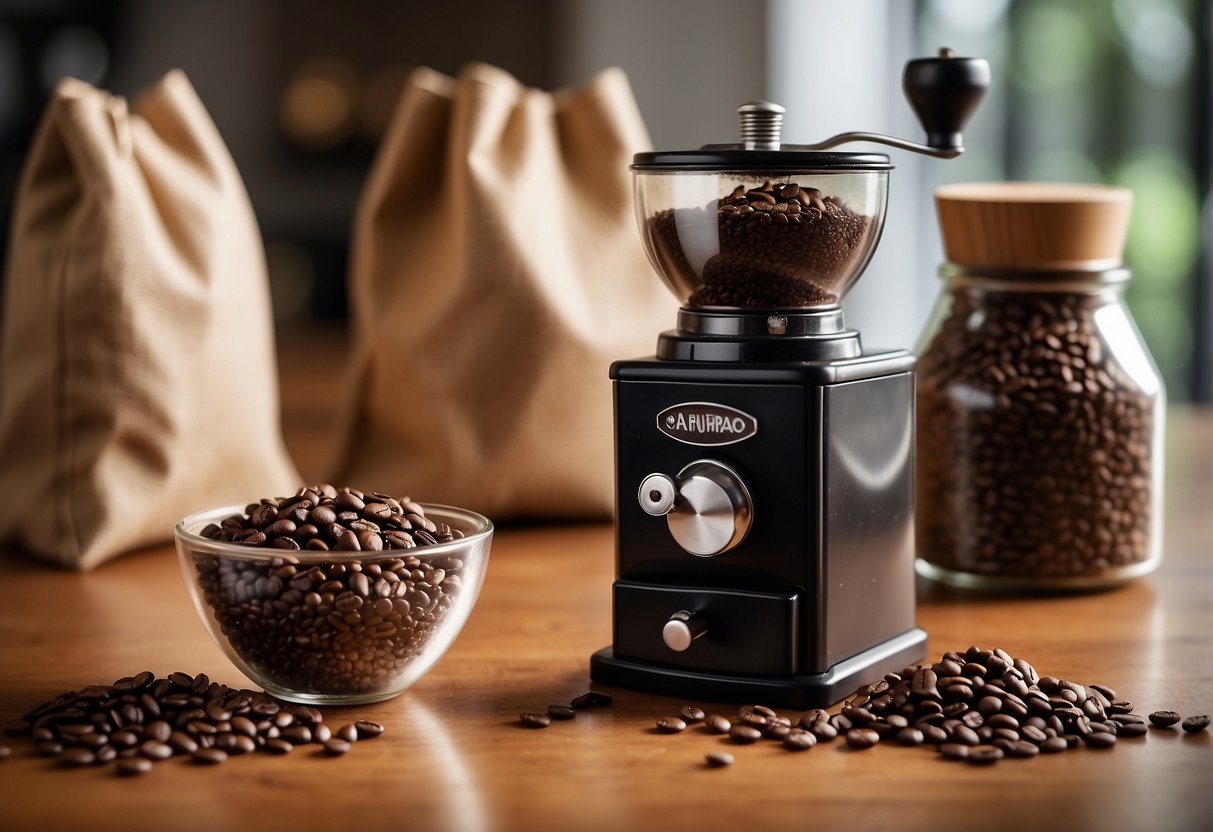
Pre-ground coffee, on the other hand, is ground by the manufacturer and packaged for convenience. While it saves you the time and effort of grinding the beans yourself, it may lose some of the nuanced flavors that coffee enthusiasts cherish. The convenience of pre-ground can be a deciding factor for busy mornings, but if you take your coffee experience seriously, investing in a grinder might change your coffee game.
Considering the pros and cons of each, think about what you value most in your daily cup. Do you prioritize flavor and aroma, with a willingness to put in a little extra effort for that perfect brew? Or is the quick, consistent, and easy approach of pre-ground coffee more aligned with your lifestyle? Your preferences will guide your choice, but knowing the impact of freshly ground coffee on your brew’s quality might tempt you to try it out.
Understanding Coffee Beans
When you think of coffee, the quality and freshness of the coffee beans are vital. The flavor and aroma of your coffee depend heavily on these characteristics. Let’s explore the types of beans and the importance of roasting.
Different Types of Coffee Beans
Arabica and Robusta are the main types of coffee beans. Arabica beans are renowned for their sweet, soft taste and higher acidity, and they are often considered superior in quality, contributing to a more pleasing aroma and a nuanced flavor profile. On the other hand, Robusta beans have a stronger, harsher taste with a grain-like overtone and contain more caffeine.
- Arabica Beans: Grown at higher altitudes, offering a sweeter, more complex flavor.
- Robusta Beans: Thrive at lower altitudes, packing a punch with a more potent, bitter taste.
The Role of Roasting in Coffee Flavor
Roasting is a transformative process that turns your coffee beans from green, flavorless seeds into rich repositories of taste. The roaster uses heat to bring out the unique flavors contained within the beans. The degree of roast – light, medium, or dark – affects the flavor and aroma profoundly.
- Light Roast: Preserves the original flavor of the bean, usually more acidic.
- Medium Roast: Offers a balanced flavor, aroma, and acidity.
- Dark Roast: Characterized by a bold, smoky character with reduced acidity.
Each bean type responds differently to the roasting process, which is carefully timed to enhance its best qualities. Keep in mind that the freshness of the bean at the time of roasting can greatly influence the outcome. Freshly roasted beans can make a significant difference to your coffee’s aroma and flavor, giving you a rich and indulgent experience.
Grinding Coffee at Home
Grinding your own coffee beans at home elevates your coffee experience by offering a fresher flavor and a customizable grind. You’ll need the right tools, and understanding the benefits will make the extra effort worth it.
Choosing the Right Coffee Grinder
Burr Grinder vs. Blade Grinder: The two main types of grinders are burr grinders and blade grinders. Burr grinders are generally more expensive but offer a more consistent grind size, which is crucial for the quality of your coffee. Blade grinders are less consistent but more budget-friendly.
| Burr Grinder | Blade Grinder |
|---|---|
| Consistent grind size | Less consistency in grind size |
| More control over grind size | Grind size controlled by grind time |
| Typically more expensive | More affordable |
| Better for precise brewing methods | Good for less precise brewing methods |
By selecting a coffee grinder that matches your brewing preferences and budget, you set the stage for a better cup of coffee.
Benefits of Freshly Ground Coffee
Freshness and Flavor: Grinding coffee beans right before brewing helps preserve the essential oils and aromas within the beans. This leads to a cup of coffee that is richer and more flavorful than coffee made from pre-ground beans.
- Oils: Freshly ground coffee retains its oils, which are responsible for a lot of the flavor and aroma.
- Aromas: Grinding releases volatile compounds that contribute to the coffee’s aroma, a key component of your coffee’s flavor profile.
Grinding your own coffee beans may take extra time, but your senses will thank you when you sip on a cup of coffee that is fresher and more vibrant.
Pre-Ground Coffee: Convenience or Compromise?
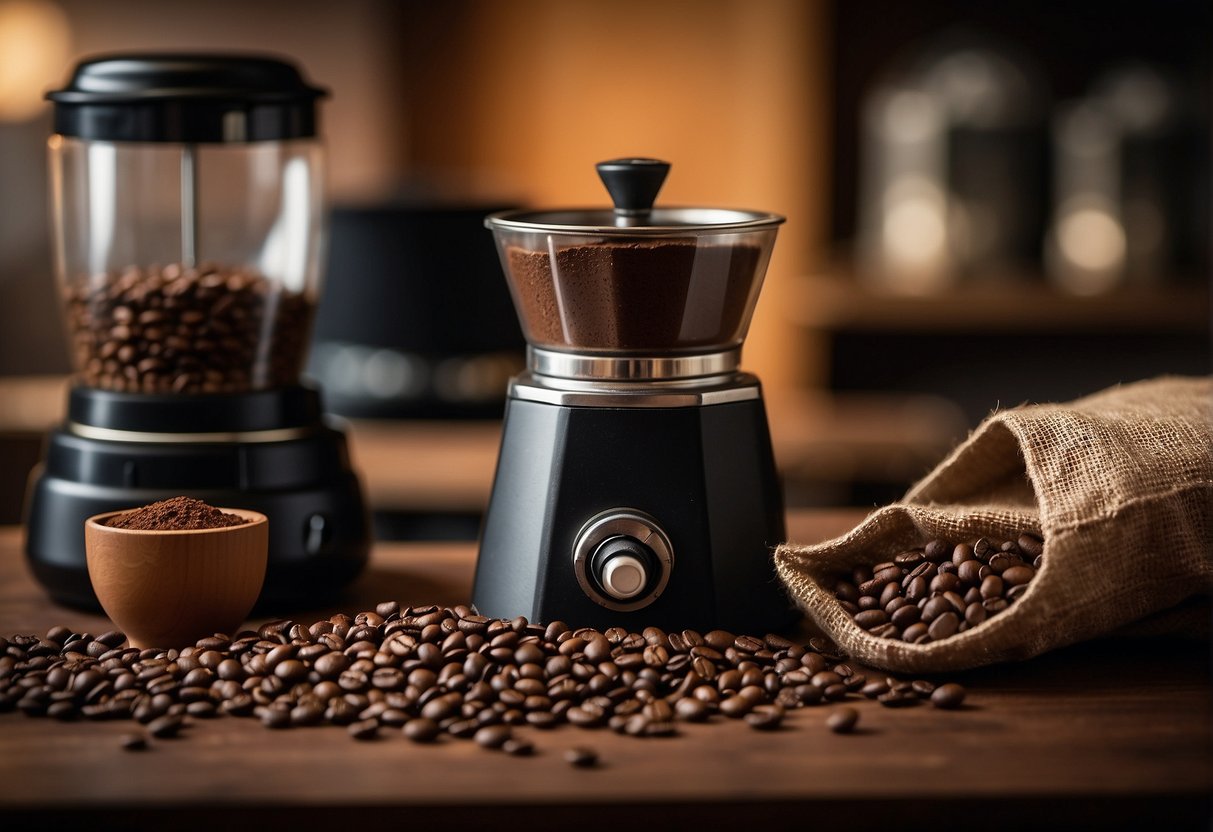
When you choose pre-ground coffee, you’re trading peak freshness for ease of use, but what does that really mean for your coffee experience?
Advantages of Pre-Ground Coffee
Pre-ground coffee has a distinct advantage in terms of convenience. For you, the coffee lover on the go, the ability to open a bag and brew immediately is a significant time-saver. Here’s what you gain with pre-ground coffee:
- Time-Saving: No need for grinding, which saves you precious minutes during your morning routine.
- Consistency: Every cup is the same as the last, with no variation in grind size.
- Equipment Cost Savings: You can avoid the expense of a coffee grinder.
- Convenient Packaging: Often comes vacuum-sealed, which can help extend its freshness.
The Shelf Life of Pre-Ground Coffee
Shelf life is a vital consideration when buying pre-ground coffee. Once opened, pre-ground coffee begins to lose flavor due to exposure to air and moisture. Here’s what you need to know about the shelf life:
- Vacuum-Sealed Bags: These are designed to increase a product’s shelf life by removing air from the package before sealing.
- Typical Shelf Life: Pre-ground coffee can last for months on the shelf but should be used within weeks after opening to enjoy its full flavor.
- Storage Tips:
- Keep it in a cool, dark place.
- After opening, sealing it airtight is crucial to prevent further degradation.
Extraction and Brewing Methods
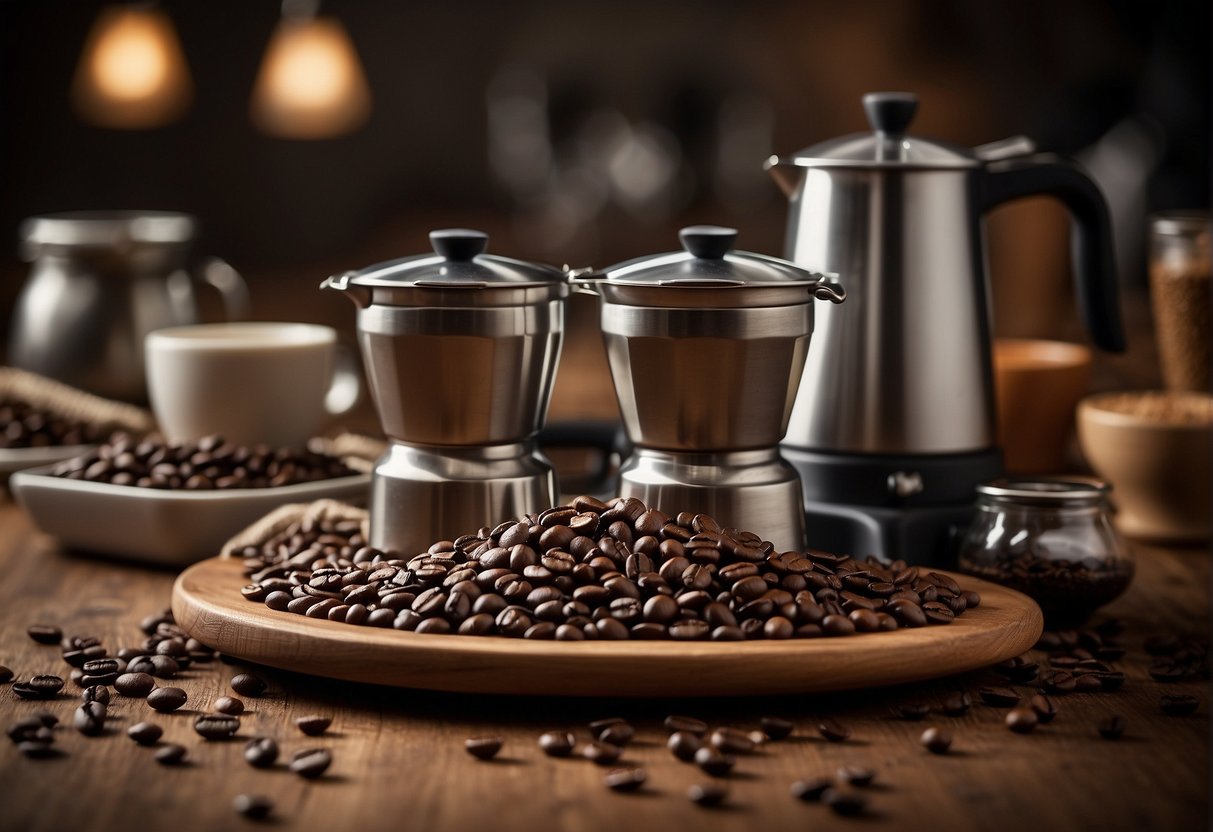
When brewing coffee, the extraction process plays a crucial role in determining the flavor and strength of your cup. Your choice of grind size and brewing method will directly affect the outcome.
Impact of Grind Size on Extraction
Extraction refers to how water pulls flavors from coffee grounds. A key factor here is surface area: fine grounds expose more area to water than coarse ones, leading to a quicker extraction.
- Espresso requires a fine grind for optimal extraction as water is forced through quickly.
- French Press, however, uses a coarse grind to prevent over-extraction and gritty residue.
- Drip Coffee systems are more forgiving but typically work best with a medium grind.
- Cold Brew takes a coarser grind and longer extraction time, which results in smooth and less acidic coffee.
Over-extraction can occur if the water is in contact with the coffee grounds for too long or the grind is too fine, leading to bitter coffee. In contrast, under-extraction, often due to too coarse a grind or insufficient brewing time, can cause a weak and sour taste.
Matching Grind to Brewing Method
Each brewing method requires a specific grind size to ensure optimal extraction:
- Espresso: Fine grind for quick and intense extraction.
- French Press: Coarse grind to enable a prolonged extraction without bitterness.
- Drip Coffee: Medium grind for balanced extraction.
- Cold Brew: Coarse grind to slow down extraction and prevent bitterness.
Selecting the right grind size for your chosen brewing method is essential to achieve the perfect cup of coffee. The following table outlines the recommended grind sizes for different methods:
| Brewing Method | Grind Size |
|---|---|
| Espresso | Fine |
| French Press | Coarse |
| Drip Coffee | Medium |
| Cold Brew | Coarse |
With the perfect match of grind size and brewing method, you’ll ensure your coffee is delicious and just the way you like it, whether you prefer a robust espresso or a mellow cold brew.
Storage and Preservation of Coffee
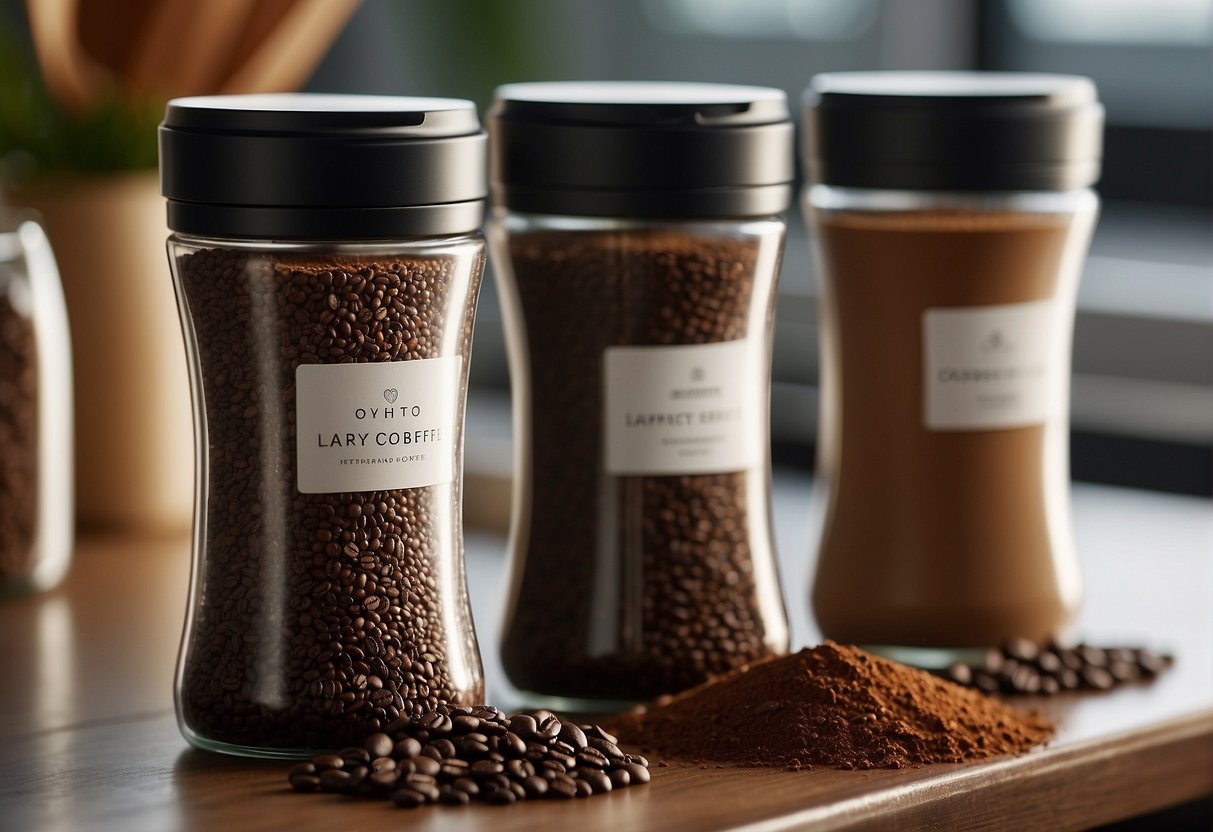
Ensuring your coffee retains its flavor and aroma involves proper storage techniques. Whether you prefer whole bean coffee or ground, how you preserve it makes all the difference.
Best Practices for Storing Coffee Beans
Coffee beans are best kept in an airtight container to prevent exposure to air, which can cause oxidation. Oxidation degrades the quality of your coffee by attacking the essential oils and compounds that give it its unique flavor and aroma. To help you remember the key steps, here’s a list of do’s for storage:
- Do use an airtight container: Sealing out air preserves freshness.
- Do store in a cool, dark place: Avoid locations where temperature fluctuates, as extreme temperatures can harm the beans.
- Do buy the right amount: Only purchase what you’ll use within a month, ensuring fresher beans.
There are several acceptable types of containers to consider:
| Container Type | Material | Light Exposure |
|---|---|---|
| Standard Coffee Canister | Metal, Glass, Ceramic | Often opaque to block light |
| Vacuum Sealed Container | Plastic, Metal | Varies, but usually designed to protect from light |
| Mason Jar/Similar | Glass, Clear or Tinted | Clear jars should be kept in dark places |
Avoiding Degradation of Coffee Quality
To protect your coffee beans or ground coffee from losing its quality, there are specific preservation pitfalls to avoid:
- Don’t store coffee in the fridge or freezer: These environments introduce moisture and can result in unwanted flavors.
- Don’t leave coffee in the bag: Many retail bags are not designed for long-term storage. Transfer your coffee to an airtight container as soon as you can.
- Don’t buy in bulk unless necessary: Larger quantities mean coffee sits longer and risks becoming stale.
Remember that different roasts react differently; dark roast beans, for instance, have more oils on the surface and can be more susceptible to environmental factors, so take extra care with them.
Personal Preference and Coffee Culture
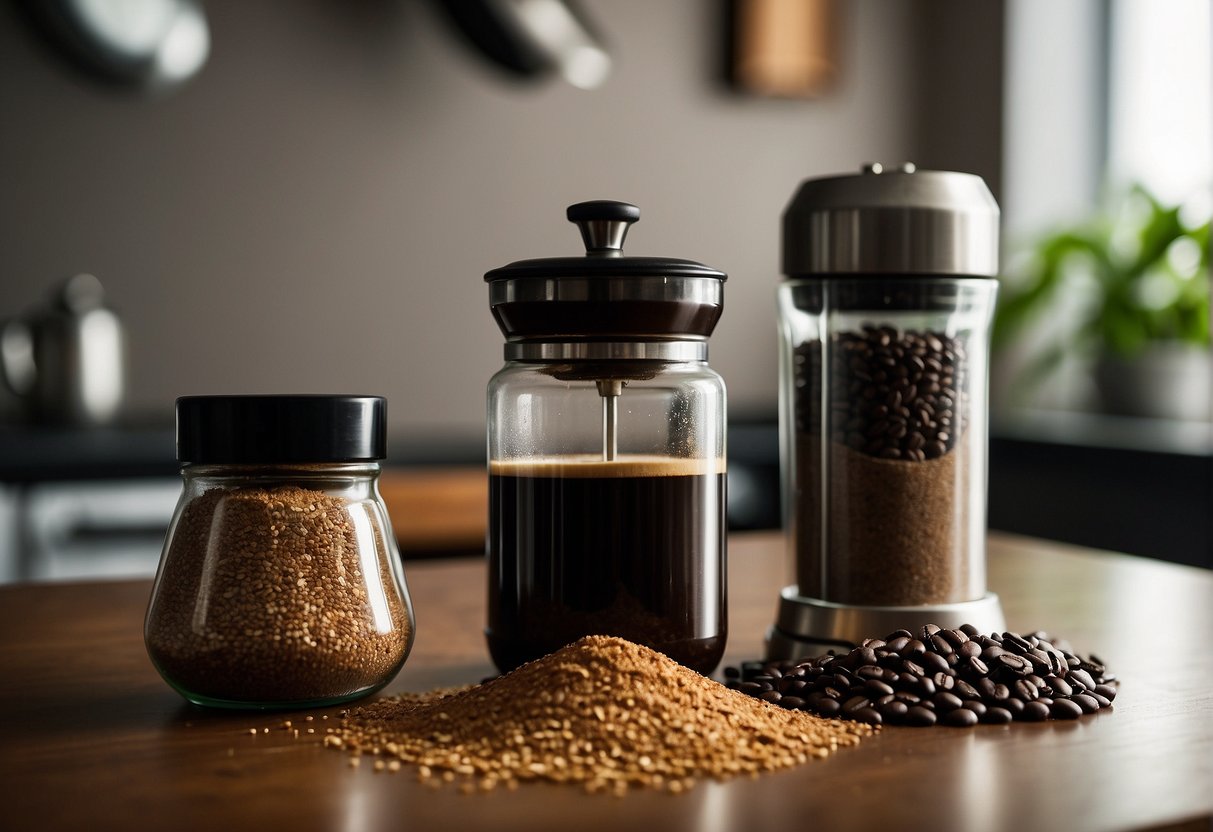
Choosing between freshly ground and pre-ground coffee beans often depends on your taste and the value you place on the coffee-making process.
Understanding Your Coffee Preferences
To fully appreciate a flavorful cup of coffee, consider your personal preference. If your morning ritual includes the aroma of freshly ground beans leading to a complex flavor profile, investing in a good coffee maker and whole beans might be your calling. But if you prioritize a quick, smooth taste without the extra effort, pre-ground coffee might suit your pace.
- Flavor: Freshly ground beans typically offer a more complex and robust flavor.
- Convenience: Pre-ground coffee saves time and simplifies your brewing process.
The Social Aspect of Coffee
Coffee has a strong social component, and your local coffee shop likely plays a role in that. Whether it’s a barista at a specialty coffee shop crafting your ideal cup of joe or the camaraderie found in the ritual of brewing coffee at home, the choice between ground types can reflect your engagement in coffee culture.
- Coffee Shops: Share your preferences with baristas to receive customized suggestions.
- At Home: Turn coffee-making into a social event by involving friends and family in the process.
Remember that being a coffee enthusiast is about exploring what works for you, while also connecting with others who share your passion. Whether you grind your beans just before brewing or enjoy the convenience of pre-ground, it’s all about what your taste buds delight in and the experience you wish to have.
Frequently Asked Questions
This section covers some of the most common inquiries about the differences between pre-ground and freshly ground coffee, from taste nuances to health considerations.
What are the taste and flavor differences between pre-ground and freshly ground coffee?
Pre-ground coffee often loses its volatile aromas quickly, resulting in a less vibrant flavor. Freshly ground coffee typically offers a more complex taste profile and aromatic experience due to the retention of oils and fragrances released during grinding.
Can you use pre-ground coffee for espresso machines just as effectively as freshly ground coffee?
Using pre-ground coffee in espresso machines can yield a decent shot of espresso; however, for optimal extraction and crema, freshly ground coffee is preferred due to finer and more precise grind size adjustments.
How does the caffeine content compare between fresh ground coffee and pre-ground varieties?
The caffeine content remains relatively stable between freshly ground and pre-ground coffee, but freshness can affect flavor, not caffeine levels.
What are the health benefits associated with freshly ground coffee as opposed to pre-ground?
Freshly ground coffee preserves more natural antioxidants and compounds that can contribute to overall health. When pre-ground, some of these compounds may deteriorate over time, potentially reducing their beneficial effects.
How soon after grinding should you brew coffee to enjoy the best flavor?
For the best flavor, it’s recommended to brew coffee within 30 minutes after grinding to utilize the fresh oils and aromatic compounds before they dissipate.
What should you consider when looking for the best fresh ground coffee beans in your area?
Consider the roast date, bean origin, and variety when selecting fresh coffee beans. A local roaster offering beans roasted within the past week and willing to provide information about the beans’ origin is a good choice.
